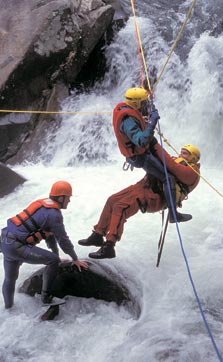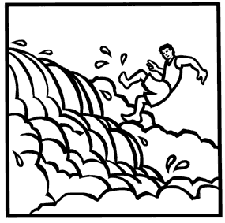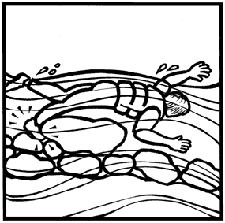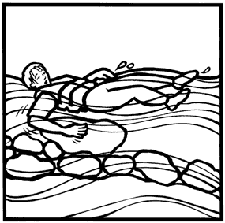 | ||||
CEPAT TANGGAP BERPIKIR, TEPAT BERTIDAK DAN BERTANGGUNG JAWAB.
Mengenai Saya
argawana-triargablogspot.com
------------------------------------------------------------
------------------------------------------------------------


Arsip Blog
-
▼
2009
(35)
-
▼
November
(19)
- Jelajahi Rimba Batang Gadis
- Climbing St
- Cuplikan Berita.
- Gunung Argopuro 3088m dpl ...
- ULAR MAKAN ORANG
- SEJARAH CAVING
- CHAMPION TEAM
- Dynamic ropes
- simultaneous Horizontal
- Rock Climbing
- ...
- Extreme Sports
- SPELEOLOGY
- Mountain Rescue
- Rescue
- Water Safety
- Students develop water rescue harness
- Water Rescue Team
-
▼
November
(19)
Untitled Playlist
Pengikut
Copyright © 2009
#
Promo Wisata
Promo Wisata
#
Wisata Yuukk
foto 1
Gasibu Bandung
# taman hutan raya juanda jawa barat
Hutan Raya Juanda
# curug malela bandung barat
curug malela bandung barat
# green-canyon
green-canyon
#
Wisata Yukk..
* Bandung Barat
Wacana pemekaran Kabupaten Bandung menjadi 2 kabupaten telah muncul sejak tahun l999. Berdasarkan surat permohonan Bupati KDH TK.II Bandung yang saat itu dijabat oleh bapak H.U.Hatta Djati Permana . S.Ip mengajukan surat kepada Ketua DPRD yang saat itu pimpinan DPRD / Ketua DPRD diketuai Bapak H.Obar Sobarna.S.Ip. Surat permohonan Bupati bernomor :135/1235/Tapem tanggal 22 [...]
* Capolaga Adventure Camp
Desa Cicadas Panaruban–Kec. Jalancagak Merupakan salah satu obyek ekowisata yang ada di kabupaten Subang, terletak di desa Cicadas Panaruban, kecamatan Sagalaherang. Capolaga Adventure Camp mempunyai keindahan ekosistem sungai Cimuja yang unik berupa air terjun Cimuja, air terjun Karembong
* Wisata Alam Gunung Manglayang
“Menapaki menara penjaga di timur rangkaian tiga gunung Legenda Sangkuriang – Burangrang – Tangkuban Perahu – Bukit Tunggul” Gunung Manglayang – gunung yang tidak disebut-sebut dalam Legenda Sangkuriang. Karena dari legenda tersebut diceritakan bahwa perahu dari Sangkuriang telah terbalik dan berubah menjadi Gunung Tangkuban Perahu; tunggul pohon yang tersisa bekas bahan pembuatan perahu Sangkuriang tetap [...]
* Desa Wisata Wangunharja
Desa Sanca Kecamatan Ciater – Subang Pengelola : Kompepar SWH Merupakan salah satu gambaran desa yang ada di daerah Subang dengan adat istiadat dan kebudayaan yang masih kental dan sampai sekarang adat istiadat tersebut masih terus dilaksanakan.
* The Jungle Water Adventure, Bogor
The Jungle Water Adventure dan biasa disebut The Jungle adalah sebuah tempat rekreasi yang dapat dijadikan sebagai tujuan wisata keluarga serta sebagai obyek wisata edukasi bagi sekolah yang ingin mengadakan rekreasi sambil belajar. The Jungle Water Adventure dibangun di kawasan Perumahan Bogor Nirwana Residence (BNR) dengan latar belakang Gunung Salak . Pemandangannya indah serta udaranya [...]
* Curug Agung/Batu KapurDesa Curug Agung Sagalaherang – Subang
Curug Agung yang dikenal dengan nama Batu Kapur, terletak di Desa Curug Agung Kecamatan Sagalaherang. Berdasarkan pengalaman para pengunjung yang datang untuk berendam di kolam air panas tersebut, dipercaya dapat menyembuhkan berbagai penyakit kulit seperti gatal-gatal. Fasilitas dan Tarif Selain kolam rendam air panas, lokasi wisata ini dilengkapi pula dengan beberapa fasilitas pondokan , tempat [...]
* Obyek Wisata Cirebon
Kuningan, Indramayu,majalengka,kab.cirebon Telaga Remis Telaga remis adalah sebuah danau alam yang juga terdapat fasilitas seperti perahu motor, sepeda air dan jalan setapak yang terletak didesa kaduela. Disekitar objek wisata ini, tepatnya didesa Cikalahang, terdapat beberapa pemancingan dan restoran dengan ikan sebagai menu utamanya (ikan mas bakar, dsb). Dengan tarif yang relatif murah, telaga remis dapat [...]
#
Komentar Pengunjung
* hari on Wisata Air Terjun Maribaya, Bandung
* ridwan on Wisata Situ Gunung, Sukabumi
* Achooyloji on Wisata Sukabumi
* eizi on Wisata Situ Gunung, Sukabumi
* nasha on Wisata Alam Cipanas Sekarwangi
#
Wisata Yukk
* Taman Nasional Ujung Kulon
* Wisata Banten
* wisata Adat, Kampung Dukuh
* paket program gathering
* Pulau Biawak
* Wisata Indramayu
* Mesjid Agung Banten
* LOKASI KAMPUNG ADAT DI JAWA BARAT
* Wisata Alam Taman Nasional Gunung Halimun
* Wisata Alam Gunung Manglayang
* Minggu Pagi di Gasibu Bandung
* Tempat – Tempat Wisata Pilihan
* Cipanas Cileungsing Buahdua Sumedang Jabar
* Wisata Alam Cipanas Sekarwangi
* Kebun Binatang Bandung
#
referensi wisatapasundan
* bandung
* Bogor
* Cianjur
* cirebon
* garut
* indramayu
* Jawa Barat Tatar Pasundan
* subang
* sukabumi
* sumedang
* tasikmalaya
#
Komentar Pengunjung
Call Center 75467730
#
#
Numpang Iklan
Find a Domain Name
Web Pro Exclusive Pricing
Use the savings for yourself or pass it on to your clients. Learn More
Become a Reseller!
Give clients what they want. Make money doing it. Learn More
Download Powerpoint gambar macam macam olah raga to Facebook - Download Powerpoint gambar macam macam olah raga to Twitter
Download Powerpoint gambar macam macam olah raga to google Download Powerpoint gambar macam macam olah raga to yahoo Download Powerpoint gambar macam macam olah raga to Technorati Download Powerpoint gambar macam macam olah raga to Digg Download Powerpoint gambar macam macam olah raga to del.icio.us Download Powerpoint gambar macam macam olah raga to Reddit Download Powerpoint gambar macam macam olah raga to Stumbleupon Tell a Friend
Blogroll
- indahnya design
- Ngakakyuk
- Stlaksana's Blog
- Ali Usman Hasyim
- Around The World
- Meyovy's Blog
- Ryoga Shiny Blog
- Hajsmy's Blog
- Herbalajaib's Blog
- M.Yusuf Diansya’s Blog
- SELAMAT DATANG
- Zephyr Concept – Blow up ur Spirit Through Weblog
- Blognya Wega Clubban
- Sinar Dewata Studio
- The Dot Blog!
- Back… in black.
- Arts And Culture
- Los_Galangticos
- Men9 Lagi Ngeblog
- RuDi92″s WeBLogs
- Dony Arisandy
- DUNIA KU
- Hiu Diary
- TUNGGUDULU
- Kunci Kesuksesan
- Riyadiaja's Blog
- Dhimas Nugraha's Blog
- Aditya's Blogsphere
- dianaruntu Blog
- Milimeter Studio
- Get and Share Information
- mayakom
- INFOKU 47
- Techno and Education
Sinar Dewata: Dunia Tanaman, Sewa Dekorasi Klik Disini
Sinar Dewata: Dunia Tanaman, Sewa Dekorasi Klik Disini





Pendidikan Dasar ARGAWANA (PDA)
ARGAWANA HAHA...HIHI
Crossbows, Archery, Slingshots & AirSoft Accessories
 |  |



































































































































